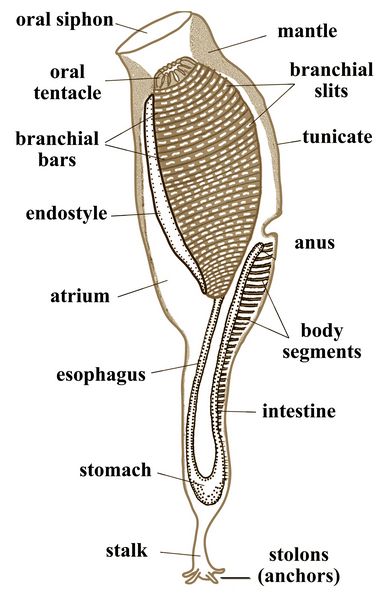Athena Review Image Archive ™
Shankouclava, a Cambrian tunicate from China

Shankouclava, a Cambrian tunicate from China (after Chen et al. 2003)
Shankouclava was an early Cambrian tunicate dating from 530 mya. It was found in the fine-grained Maotianshan Shale at Shankou village, Kunming, in South China by Chen et al. (2003). Originally deposited in a shallow marine delta environment, the eight specimens recovered of Shankouclava represent the first known fossil tunicates. It is named Shankou- for the village where found, and -clava for "attached," referring to the anchored stalk typical of some adult tunicates.
Shankouclava's body size is 2-4 cm. Like today’s adult tunicates, the Shankouclava fossils lack evidence of a notochord, and show a simple U-shaped stomach, linked to the pharynx at one end and to an out-siphon at the other end. They also show evidence of a an oral siphon with oral tentacles.
Like some
modern tunicates such as Clavelina, it also had stolons or anchoring
strips at the proximal end, indicating it was sessile and rooted to the
ocean floor. Each of the eight specimens was found alone, suggesting
the animal was solitary.
References:
Chen,
Jun-Yuan, Di-Ying Huang, Qing-Qing Peng, Hui-Mei Chi, Xiu-Qiang Wang,
and Man Feng. 2003. The first tunicate from the Early Cambrian of
South China.
Proc. of the National Acadamy of Sciences 100 (14): 8314-8318.
Copyright © 1996-2020 Rust Family Foundation (All Rights Reserved).